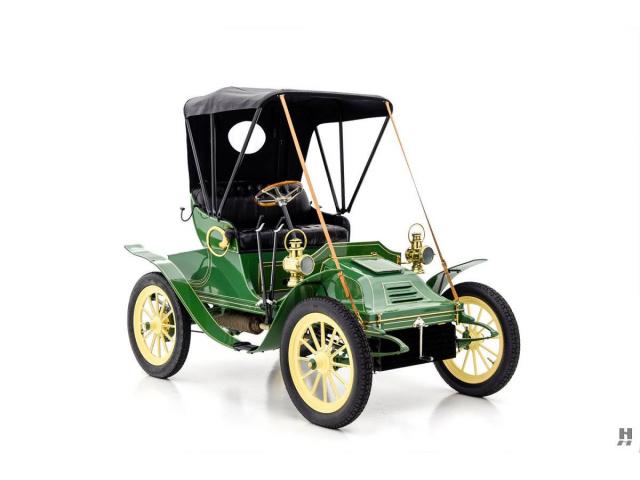1906 Autocar Type X Runabout
- Brand: Autocar
1906 Autocar Type X Runabout
Astute motoring enthusiasts might recognize the Autocar name as one that has been proudly emblazoned on the side of some of the largest, most robust, severe-duty trucks ever built. However, well before the big twelve-cylinder diesel monsters of the 1950s and 1960s, Autocar built small and medium-sized passenger cars out of its Ardmore, Pennsylvania factory beginning in 1900. Prior to being incorporated as Autocar, the company was known as Pittsburgh Motor Vehicle Company, founded in 1897, which produced a handful of three and four-wheel motor buggies.
Once Autocar established itself in its new Ardmore factory, it began production of a series of small runabouts and mid-sized touring cars, mostly powered by a twin cylinder engine, though a four-cylinder would join the range by 1905. Early Autocars would feature a revolutionary shaft drive arrangement – credited as the first American car so equipped. Autocars were exceptionally well made for their time, and period advertising rather bluntly claimed: “It cannot blow up or burn up.” We suppose expectations were somewhat low in the early days of the automobile! Autocar would eventually diversify into commercial vehicles and are also credited with creating one of America’s first purpose-built commercial trucks, which featured a forward mounted driver’s compartment to maximize load space – a primitive precursor to the cabover.
The Type X was offered between 1904 and 1906, with the most significant change coming in 1905 with the fitment of a steering wheel in place of the tiller for ease of control; another feature of the Autocar that would be touted in-period. The Type X was an attractive little runabout, with a twin cylinder engine mounted behind the front axle line, making about 12 horsepower. By 1906, the wheelbase had been increased by six inches for improved stability and comfort. The Type X and its stablemates sold well enough to private buyers, but Autocar’s resounding success with its commercial vehicles spelled the end for its passenger car business. As demand for the more profitable trucks grew, the cars would receive less and less attention, eventually fizzling out by 1911.
This delightful Autocar Type X runabout is one of approximately six known surviving examples of the 713 Autocars constructed in 1906. It is an honest and attractive car, restored in a cheerful apple green and straw-yellow livery. The body is constructed mainly of wood, including the graceful steam-bent fenders. The hood is steel, and the paintwork is in good condition overall with consistent finish quality all around. Era-appropriate brass fittings include a pair of “Neverout” cowl lamps, with a single “Stay-Lit” tail light and various bits of hardware that collectively show a slight patina to the finish and appear well-maintained. It rides on wood-spoke wheels finished in contrasting straw yellow, which is repeated on the body’s coach stripes.
Driver and passenger sit atop a leather button-tufted bench, with weather protection provided by a black vinyl buggy top. The unique steering wheel features clever twist-controls for spark and throttle; an unusual alternative to the traditional hub-mounted levers, and an interesting glimpse of the type of creative thinking that fueled the automotive industry at the time.
For the Model X, Autocar used its proven horizontally-opposed two-cylinder engine.
Descriptions & pictures by hymanltd
| Specification | |
| Production Start | 1906 |
| Country of origin | USA |

































